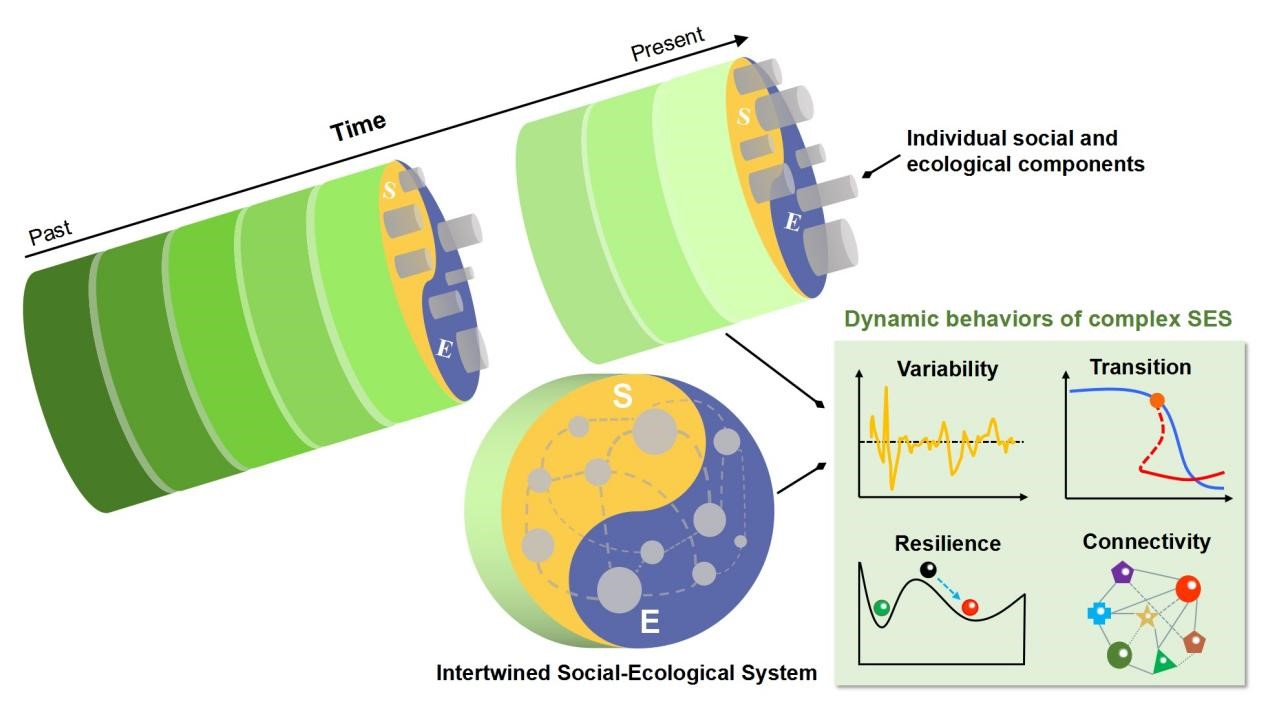Study unveils positive social-ecological transition in Yangtze River Delta, China
Social-ecological systems (SES) are complex, dynamic systems with interdependencies between their ecological components and social actors. Studying the transient (e.g., nonlinear) dynamics of interlinked SES can provide valuable insights into achieving the UN Sustainable Development Goals for a more desirable future.
However, identifying critical transitions in real-world SES remains a major challenge. A significant knowledge gap exists in index framework for characterizing dynamic behaviors within SES changes. This issue is also compounded by the scarcity of long-term datasets spanning entire transition periods, which together limits our comprehension of the Anthropocene landscape changes.
Recently, an international research team led by Dr. LIN Qi and Prof. ZHANG Ke from the Nanjing Institute of Geography and Limnology, Chinese Academy of Sciences made some progresses by advancing an evolutionary framework that utilizes a dynamic metric based on Rate of Change (RoC) derived from multidecadal socioeconomic and geobiophysical (lake sediment) records. These researchers from China, France, Netherlands, Sweden, Italy, United Kingdom, and South Africa worked together, and applied the co-evolutionary framework to Lake Taihu watershed from China’s Yangtze River Delta region.
The study was published in Proceedings of the National Academy of Sciences of the United States of America.
By integrating sedimentary ancient DNA (sedaDNA) metabarcoding, multi-proxy paleoenvironmental analyses, and socioeconomic data, the researchers elucidated the temporal dynamics of regional SES over several centuries. Starting in the 1950s, the SES underwent a shift towards an interconnected and ecologically unsustainable state, driven by a series of deleterious positive feedbacks. These process exacerbated water eutrophication, soil erosion, air pollution, and ecosystem resilience loss under human stressors. More interestingly, the study revealed a decoupling of socioeconomic development from eco-environmental degradation since the early 2000s, signifying a potentially more sustainable reconfiguration of the regional SES.
“Thanks to the wide-ranging environmental laws and policies, conservation and ecological engineering projects, and institutional innovations, the recent decoupling signal discloses a sustainable development pattern not observed over the past millennium in this iconic region”, said Dr. LIN Qi, first author of the study. The signal highlights the crucial role of adaptive management and policy intervention in fostering positive transformations.
This case study also provides insights into the resilience and adaptability of regional SES facing similar ecological and environmental stressors. It demonstrates potential strategies for transformative action as outlined under the UN Sustainable Development Goals. “Adopting the co-evolutionary framework to address the complexities of SES dynamics, just like in Lake Taihu case, can offer a blueprint for where and how transformative steps can be taken to achieve a good Anthropocene”, said Prof. ZHANG Ke, corresponding author of the study.

IMAGE: Dynamic changes of intertwined SES from a historical evolutionary perspective.
CREDIT by ZHANG KE
Website linkage: https://www.pnas.org/doi/10.1073/pnas.2321303121
Contact Information
Ke Zhang at the Nanjing Institute of Geography and Limnology, Chinese Academy of Sciences
Email: kzhang@niglas.ac.cn
